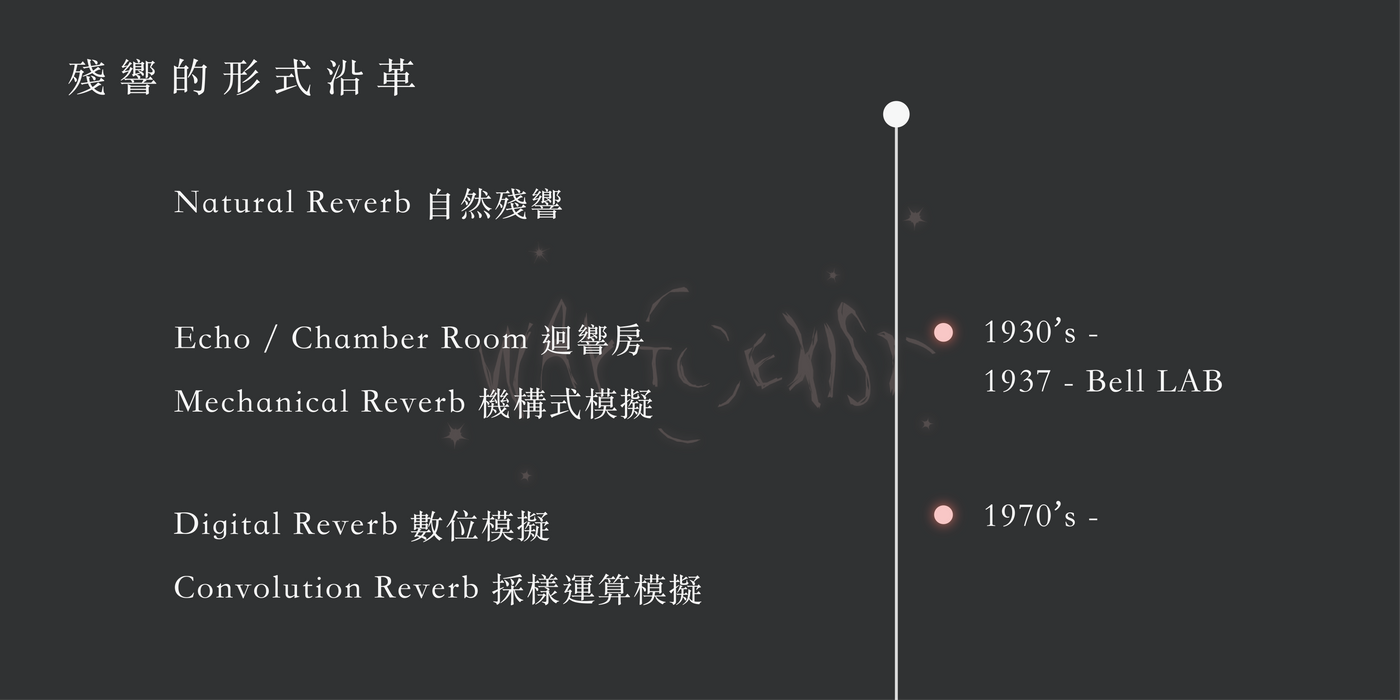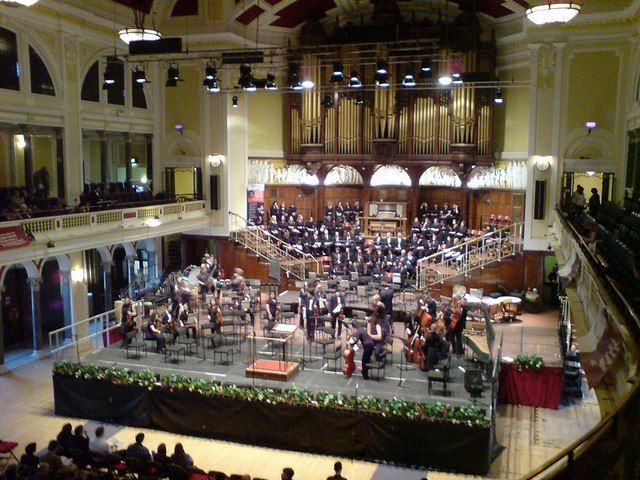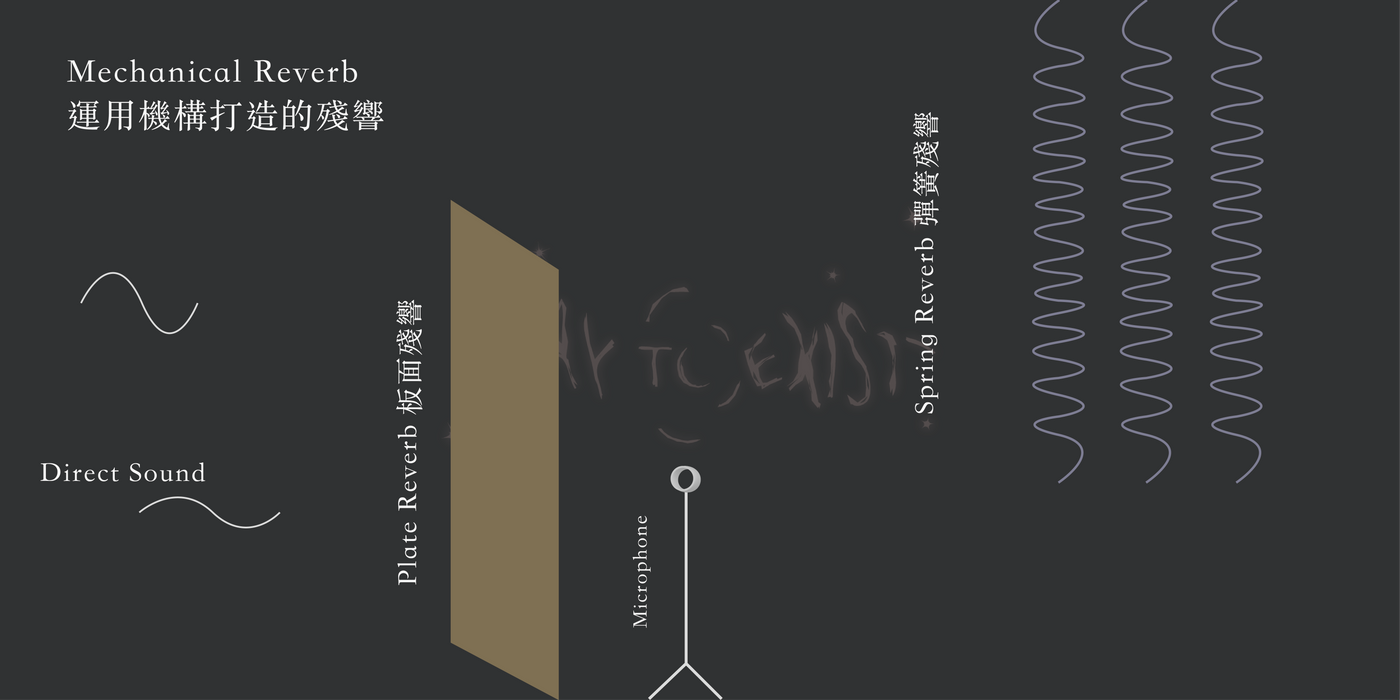About "Reverb" in Music Production|Audio Technology and Sound Exploration

Content directory
- What is Reverb, is it the same as Echo?
- From Natural Spatial Acoustics to Digital Simulation - The Evolution of Reverb
- How to "control" Reverb?
- Cool Reverb gear (both hardware and software)
What is Reverb, is it the same as Echo?
Sound travels through a medium, and as soon as it touches a surface, it reflects, and this physics is the basis for the reverberation we're about to understand.
When we shout in the open space, there is a probability that we will hear the "echo" of the shouting. At this time, we will say: This "Echo" is very loud, and so on. The echo phenomenon mentioned here is:
The air fluctuations caused by the sound pressure are transmitted in a directional way, and when it touches a distant plane, the same waveform is directly reflected back (ideal state), so what we call Echo is often a wave after wave of sound that is regularly reflected due to the amplitude cycle .
However, Reverb is far from this. In daily life, we will talk and make sounds in large or small spaces. At this time, in addition to directional transmission, the sounds we make will move around in the space , while the surrounding The reflecting surface is not necessarily flat . Therefore, the sound will produce countless reflections and intersections in the space. During this process, every fluctuation in the range of human hearing will be heard by us. However, the sound heard at this time is not As clear as the Echo, it is a turbid (losing the original sound) sound reflection that allows the human senses to judge the "sense of space".
It is precisely because people are in an environment where they can hear reverberation all the time, and have become accustomed to the analog (natural) sound with reverberation. Therefore, in music production, we can create (simulate) space and make sound through Reverb. A smoother, more natural combination with the sound.
From Natural Spatial Acoustics to Digital Simulation - The Evolution of Reverb

Natural Reverb Natural Space Reverb
The way humans use the reflection characteristics of sound in space to create a more grand, solemn and gorgeous atmosphere can be seen in the opera hall or church that transmitted important messages in ancient times:
The walls of churches are usually not flat, allowing the sound source to move around in the space, creating a thicker, more solemn sound.
At the beginning of the twentieth century, in the process of making music, people will naturally produce different natural reverberation effects according to different recording locations, such as: recording solemn and gorgeous songs in churches and dance halls, recording in studios. Create a special room to record unique sounds and more.

This approach to creating a sense of space has several major difficulties and drawbacks:
If you want to record the feeling of a certain space, you must actually record it in it. In addition, there is no way to independently post-process the important parameters of the reverberation for the recorded sound. After the recording is completed, the essential state of the sound cannot be changed. In other words, although this recording method can get the real reverberation of sound waves actually reflected in the space, it cannot be adjusted for the effect of the reverberation, such as dryness/humidity (the reverberation effect participates in the original sound level).
Chamber Room Reverberation Room
In view of the above shortcomings, around the 1930s, people began to conceive of another way to add a sense of space: to create a room dedicated to recording reverbs - the Reverb Room .
Reverb Room (there are many ways to call it: Reverb / Chamber / Echo / Space Room) is usually built with a relatively flat concrete wall, and after acoustic measurement, Diffuser (diffuser), Bass Trap (bass) are appropriately placed. traps) or reflective surfaces of different materials to create a special sense of space .
The difference from the above method of recording in a specific space is that in this method, the vocals and acoustic instruments that have been recorded in the studio are played through speakers placed in a specific space, and then through the microphones placed and positioned after acoustic measurement. Recorded "Sense of Space".
The advantage of this method is that in addition to the original recorded original sound, there is also an independent Reverb track, so the dryness and wetness of the Reverb can be adjusted independently. Hear the sound with a sense of space and no muddiness.
**This method is often done on the fly with the Send&Return Aux track in contemporary mixing jobs. **
Even if the rendering degree of the space can be adjusted, the remaining parameters, such as the overall tone / Pre-delay / Decay Time (decay value), etc., still cannot be adjusted, and the production cost and space usage are still high and occupy a lot of space , which prompts music producers to start developing A new way to add Reverb.
**The above parameter names will be explained in the next section**
Mechanical Reverb Mechanical Simulation

Spring Reverb Spring Reverb
Also in the 1930s, the famous audio laboratory Bell LAB developed a device that uses a simple structure and can simulate a real sense of space: the spring reverb. As the name suggests, the main structure of this machine is to generate a turbid sound through the vibration of the spring. In order to improve the Reverb Room where many parameters cannot be adjusted, the spring-type Reverb can directly adjust the main parameters of the Reverb by adjusting the spring tension, length, and metal material. , the way this technology is picked up is very simple:
The signal is transmitted from one end of the spring to the other end, and the amplitude of the spring is used to change the nature of the sound and create a sense of space.
The first person to incorporate this structure into an actual mass-produced instrument was Laurens Hammond, who transformed this spring structure and put it into a pipe organ, successfully creating the first small home organ (Organ) with a "grand sense of space".
This model (Model A Hammond Organ) has brought great echoes to the brand, mainly because:
People are accustomed to listening to the organ playing in places with a sense of spaciousness, such as churches and auditoriums, and naturally combine the sound of this instrument with the blockbuster Reverb. Hammond's move just caught the market.

Spring-type reverberation tools have been continuously improved in the following years, and even the idea of putting springs into buckets and injecting liquids of different densities to control the parameters.
Plate Reverb
Similar to the operation of springs, through metal plates of different materials, the essence of sound is changed to simulate the sense of space. Since the entire panel can vibrate the sound energy, the sound collection position has also evolved from only the other end of the spring receiving sound to the entire panel around the panel that can record sound as required.
The more famous Plate Reverb models, such as the various Plate Reverbs developed by EMT Electronics from Germany, by the way, their Plate Reverbs were later reproduced in the form of software Plugins by the well-known audio manufacturer Universal Audio .
In addition to being used for acoustic instruments such as organs, the mechanically simulated Reverb is also very suitable for electronic instruments to create sci-fi tones, such as synthesizers and electric guitars.
Electric guitar manufacturer Fender has also launched many electric guitar amps (AMPs) with Spring Reverb .
Digital / Convolution Reverb Digitally produced reverb
After years of evolution, Reverb has also entered the era of digitalization. The EMT introduced above can be said to be one of the more well-known companies that took the lead in building digital Reverb. Another well-known product should be the Lexicon company launched in the late 1970s. Lexicon is still well-known in the market for spatial effects, and the price is no longer as scary as in the 1970s. You can even see it in many home recording consoles Lexicon collaborations such as: Soundcraft's Console series .
After the development of personal digital computers, Digital Reverb has been further softwareized. For example, in the Logic Pro launched by Apple, which is used by many music producers today, there is a Plugin for digital analog Reverb such as Space Designer. Convolution sampling (operation) simulation is a step closer to using field sampling combined with digital operations to simulate the spatial acoustic patterns in real scenes.
How to "control" Reverb?

It is easy to create a sense of space, but how to actually use it to make the sound natural and pleasant instead of sticky and turbid, that is, start with several key parameters that can control and adjust Reverb. The following figure shows the sound with time. Generate rough conceptual maps of different states in space.
In the figure above, we can get a glimpse of the parameters to be introduced next:
- Direct Sound
- Pre-Delay Time Pre-delay time
- Early Reflections
- Late Reflections Late Reflections / Late Reflections
- Decay Time Decay period
- Space
- Density Material Density
- Material
- Diffusion Level The degree of sound diffusion
Direct Sound—
The waveform emitted by the sound source and within the range of human hearing is directly received by the receiver (person or microphone, etc.). Although the sound will be slightly changed by various variables of the medium (density, humidity, etc.), it can be idealized for the "original sound".
Pre-Delay Time & Early Reflections (ERs)
"Early reflected sound" refers to the reflected sound that reaches the receiver after the waveform emitted by the sound source is initially reflected in space, and then reaches the receiver through just a few reflective surfaces (for example: a layer of reflection that is received by the receiver only after being reflected from the ceiling Voice).
Pre-Delay Time The pre-delay time is the time interval between the direct sound and the early reflection sound. In Reverberation production, this is a very important parameter, because in terms of hearing, the longer the interval is, the more space you are in. big.
Late Reflections Late Reflections / Late Reflections & Decay Time Decay Time—
Unlike ERs, which were previously reflected only a few times, after thousands of reflections, these late reflections are no longer audible as the original sound, but become a muddy, cloudy reverberation sound.
Decay Time is the time when the entire Late Reflections disappear, that is, the time when the entire sound reverberation disappears. In some special definitions, Decay Time refers to the time when the original sound is reduced by 60 dB, but this is not a standard definition. required time.
Material & Density Material (Density) —
Each material has a different surface, which will directly affect the amount of sound waves absorbed and attenuated. Therefore, by changing the material, you can get a different feeling of space. Generally speaking, the sound reflected from the surface of a higher density object is denser and thicker. (clear), lower surfaces absorb more sound, resulting in more open, diffuse (fuzzy) reflections.
Diffusion Level The degree of sound diffusion—
In addition to the material, we can control the direction and dispersion of the reflected sound by changing the number of reflecting surfaces. This variable must be carefully measured and carefully installed with various tools such as Diffuser, Bass Trap , Sound-absorbing panels can obtain the desired degree of reverberation diffusion.
Space space—
This is one of the most convenient functions of the digital software Reverb. We can directly select the space options provided in the software, and the software will automatically set the parameters to the space appearance we selected.
Some cool Reverb gear (both hardware and software)
Now that we understand what Reverb is and how it works, let's take a look at some of the cool tools on the market right now (2022) for Reverb.
ChromaVerb from Logic Pro X

Apple's product, although it is a software Reverb, but the author must admit that if I blindly test this Plugin to compare the physical space Reverb, I may really not be able to tell the difference.
LightPedal from Game Changer
This is a rare Spring Reverb system on the market today, which is driven by three metal springs. In addition, there are many parameters that can be adjusted, and the output can also be completely Dry. You can even change the Reverb by tapping the vibration of the spring. Actually listening to this The effects are really shocking, and the input synth sounds are misty, as if you are in space in an instant. I recommend everyone to check out this video, it's really cool. (also available in Taiwan)
PhoenixVerb from iZotope
A series of Reverb software produced by iZotope are quite excellent, and there are also many multi-parameters not mentioned above that can be adjusted. It is also a series of software effects that producers often choose.
Epilogue
Effects such as Reverb, when properly calculated and used in music production, can make Dry's voice more beautiful and moving. I think spatial effects are one of the most important aspects of music production (of course, every aspect is important. ), our senses can visualize the concepts, scenes, etc. that are to be expressed in the song through the changes in these sounds.
Next, the "Audio Technology and Sound Exploration" of the existence guide will continue to delve into this magical field, and you are welcome to pay attention and discuss together.
Like my work? Don't forget to support and clap, let me know that you are with me on the road of creation. Keep this enthusiasm together!

- Author
- More